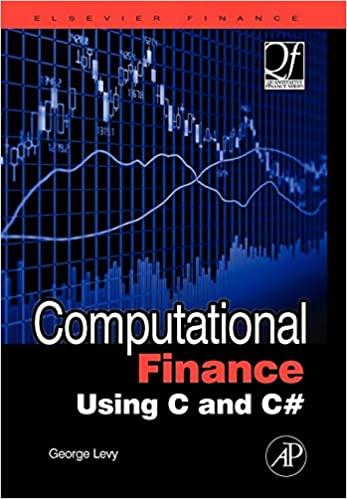Question
PLEASE ANSWER ALL QUESTIONS!!!!!!!! NOTE: For SHARP RATIO, assume the risk free rate to be 0 PLEASE ROUND TO 2 DECIMALS! THANK YOU AVERAGES sp500
PLEASE ANSWER ALL QUESTIONS!!!!!!!!
NOTE: For SHARP RATIO, assume the risk free rate to be 0
PLEASE ROUND TO 2 DECIMALS! THANK YOU
AVERAGES
| sp500 | A | B | |
| Average | -0.0069 | 0.0018 | 0.0015 |
covariance matrix:
| Sp500 | A | B | |
| Sp500 | 0.00336 | ||
| A | 0.00322 | 0.0041 | |
| B | 0.0044 | 0.00514 | 0.00824 |
For a portfolio formed by 40% in the SP500 and 60% in A. Calculate the return on the portfolio.
8.) Using the covariance matrix from question 7, calculate the variance of the portfolio formed by 40% in the SP500 and 60% in A.
9.) Using the variance from question 8, calculate the standard deviation of the portfolio formed by 40% in the SP500 and 60% in A.
10.) Using the average and standard deviation from previous questions, calculate the Sharpe ratio for the portfolio formed by 40% in the SP500 and 60% in A.
11.) Using the averages from question 7, calculate the average of a portfolio formed by 30% in A and 70% in B.
12.) Using the covariance matrix from question 7, calculate the variance of a portfolio formed by 30% in A and 70% in B.
13.) Using the variance from question 12, calculate the standard deviation for the portfolio formed by 30% in A and 70% in B.
14.) Using the average and standard deviation from previous questions, calculate the Sharpe ratio for the portfolio formed by 30% in A and 70% in B.
15.) Which of the portfolios offer greater return per unit of risk taken?
A. The portfolio formed by 30% in A and 70% in B
B. portfolio formed by 40% in the SP500 and 60% in A
c. Both give the same return per unit of risk
Step by Step Solution
There are 3 Steps involved in it
Step: 1

Get Instant Access to Expert-Tailored Solutions
See step-by-step solutions with expert insights and AI powered tools for academic success
Step: 2

Step: 3

Ace Your Homework with AI
Get the answers you need in no time with our AI-driven, step-by-step assistance
Get Started


